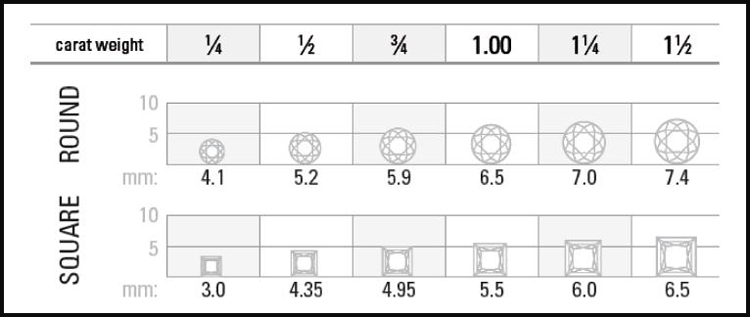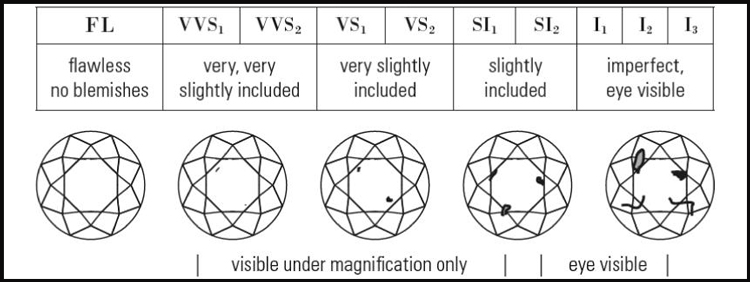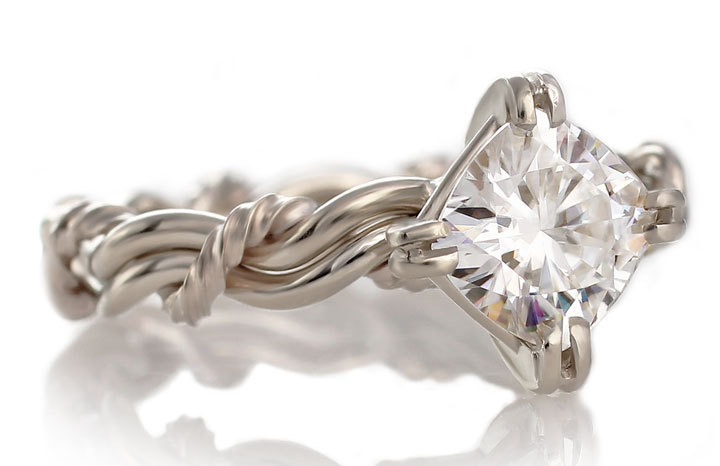Todd Alan’s diamond wedding rings are individually handcrafted, not mass-produced. Each ring is made to order. Explore diamond options on this page to find the perfect one for you. If you have any questions, feel free to call us at 941-217-4969.

All diamonds on our site are G-H color grade or higher.

One factor that determines the value of a diamond is its color. With the exception of fancy-colored diamonds, the most valuable diamonds are those with the least color. Although many people think of gem quality diamonds as colorless, completely colorless diamonds are very rare. The diamond color scale ranges from D (colorless) to Z (light yellow or brown). A diamond’s color is determined by a manual process of comparing the diamond to a master set. Each letter grade represents a range of color and is a measurement of how noticeable a color is.
When diamonds are formed with traces of other minerals, rare and beautiful colors can result. These “fancy” colors range from blue and brilliant yellow to red, brown, pale green, pink, and violet. Because of their rarity, colored diamonds are highly desirable and typically more valuable.

Carat refers to a diamond’s weight. One carat, the traditional unit of measurement for diamonds, is approximately 0.2 grams. You may also hear the weight of a diamond referred to in points. One carat is equivalent to 100 points, so a 75-point diamond is equal to 0.75 carats. Because they are rarer, larger diamonds have greater value per carat, so the price of a diamond rises exponentially to its size. The more you learn about diamonds the more you can decide what size would be best for you.
All diamonds on our site are SI1 clarity grade or above.

A diamond’s clarity is measured by the existence or absence of visible flaws. Tiny surface blemishes or internal inclusions, even those seen only under magnification, can alter the brilliance of the diamond and thus affect its value. Clarity levels begin with flawless (FL, IF), followed by very, very slight (VVS1, VVS2), very slight (VS1, VS2), slightly included (SI1, SI2), and included (I1, I2, and I3).

© 2023 All rights reserved